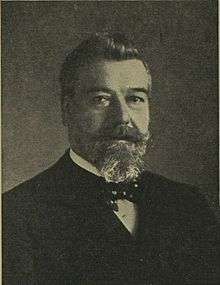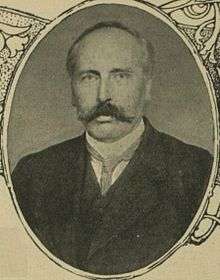Hanley was a borough constituency in Staffordshire which returned one Member of Parliament to the House of Commons of the Parliament of the United Kingdom between 1885 and 1950. Elections were held using the first past the post voting system.
History
The constituency was created for the 1885 general election. Before this, since 1832 a parliamentary borough of Stoke-upon-Trent had existed, covering almost the whole of what is now the Stoke-on-Trent conurbation and electing 2 MPs. In 1885 this was split into two constituencies electing a single member each, Stoke-upon-Trent in the south and Hanley in the north. Hanley became a parliamentary borough in its own right, and shortly afterwards also became a county borough.
The Hanley constituency in the 1885-1918 period included Burslem as well as Hanley itself, and was one of the most populous urban constituencies in the country, with more than 100,000 inhabitants by the time of the First World War. Its main economic base was pottery, though both towns included substantial numbers of coal miners as well as pottery workers. Predominantly working class, it could be normally be considered a safe Liberal seat; however, the Conservatives managed a narrow victory as part of their national landslide in 1900, perhaps helped by lack of enthusiasm among the potters for the Liberal candidate, Enoch Edwards, who was one of the leaders of the miners' union. Edwards convincingly recaptured the seat in 1906, and with the rest of his union joined the Labour Party in 1909. At the by-election after his death, however, the Liberals regained the seat with the Labour candidate a poor third.
By the time of the general election of 1918, the county borough of Hanley had been absorbed into an enlarged county borough of Stoke-on-Trent, and in the boundary changes implemented in that year the same process took place at parliamentary level. The new parliamentary borough of Stoke-on-Trent was accorded three seats in place of the two which the area had had since 1885, and was divided into three single-member constituencies of which Stoke-on-Trent, Hanley was one. The new division was smaller than the old constituency, Burslem now having a seat of its own, and quickly became a safe Labour seat, though the Conservatives won it in their landslide year of 1931.
Hanley was abolished for the 1950 general election, being largely replaced by the new Stoke-on-Trent Central constituency.
Members of Parliament
Elections
Election in the 1910s

Enoch Edwards

RL Outhwaite
A General Election was due to take place by the end of 1915. By the autumn of 1914, the following candidates had been adopted to contest that election. Due to the outbreak of war, the election never took place.
- Seddon was endorsed by the Coalition Government.
Elections in the 1920s
Elections in the 1930s
General Election 1939/40
Another General Election was required to take place before the end of 1940. The political parties had been making preparations for an election to take place and by the Autumn of 1939, the following candidates had been selected;
Elections in the 1940s
References
- ↑ British Parliamentary Election Results 1885-1918, F W S Craig (Glasgow: Political Reference Publications, 1969)
- ↑ British Parliamentary Election Results 1885-1918, F W S Craig (Glasgow: Political Reference Publications, 1969)
- ↑ British Parliamentary Election Results 1885-1918, F W S Craig (Glasgow: Political Reference Publications, 1969)
- ↑ British Parliamentary Election Results 1918-1949, F W S Craig (Glasgow: Political Reference Publications, 1969)
- ↑ British Parliamentary Election Results 1918-1949, FWS Craig
- ↑ British Parliamentary Election Results 1918-1949, FWS Craig
- ↑ British Parliamentary Election Results 1918-1949, FWS Craig
- ↑ British Parliamentary Election Results 1918-1949, FWS Craig
- ↑ British Parliamentary Election Results 1918-1949, FWS Craig
- ↑ British Parliamentary Election Results 1918-1949, FWS Craig
- ↑ British Parliamentary Election Results 1918-1949, FWS Craig
- ↑ Report of the Annual Conference of the Labour Party, 1939
- ↑ British Parliamentary Election Results 1918-1949, FWS Craig
- The Constitutional Year Book for 1913 (London: National Union of Conservative and Unionist Associations, 1913)
- Michael Kinnear, The British Voter (London: BH Batsford, Ltd, 1968)
- Henry Pelling, Social Geography of British Elections 1885-1910 (London: Macmillan, 1967)
- Frederic A Youngs, jr, Guide to the Local Administrative Units of England, Vol II (London: Royal Historical Society, 1991)
- Leigh Rayment's Historical List of MPs – Constituencies beginning with "H" (part 1)
|
|---|
|
| Areas, towns and wards | |
|---|
|
| History | |
|---|
|
| Parliamentary constituencies | |
|---|
|
| Religion | |
|---|
|
| Tourism | Buildings | |
|---|
| Theatres | |
|---|
| Museums and libraries | |
|---|
| Shopping | |
|---|
| Parks and countryside | |
|---|
| Sport and music venues | |
|---|
|
|---|
|
| Media | |
|---|
|
| Education | |
|---|
|
| Companies | |
|---|
|
| Sport | Association football teams | |
|---|
| Speedway teams | |
|---|
|
|---|
|
| Transport | Canals | |
|---|
| Public transport | |
|---|
| Rail | |
|---|
| Major roads | |
|---|
|
|---|
|
| Miscellaneous | |
|---|

